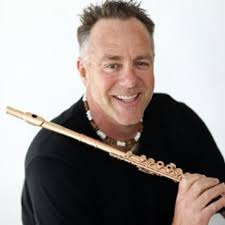The Olympian Abstractions of Danilo Pérez and his Trio

Danilo Pérez Photo used by permission of La Jolla Athenaeum
There was a period of time when I was deeply into creating electronic music. I concluded rather abruptly that I did not care for most of the sounds commercially available to me because they were all generated using digital sources and sounded artificial. What has always fascinated me has been electronic music that utilizes acoustic sounds as source material – “Acousmatic” music.
There was a period of time when I was deeply into creating freely improvised music. Again, I concluded rather abruptly that I did not care for most purely improvised music. I instead prefer music that utilizes more or less familiar material, original or not, that is then abstracted, obfuscating its source. Like acousmatic music, abstracted interpretation allows me to better appreciate what other musicians are doing, having a point of reference to work from.
This is not a value judgment, merely a statement of my own aesthetic preferences. This knowledge led me to understand one of the primary features I found so absolutely thrilling in the concert of pianist Danilo Pérez, bassist Ben Street and drummer Adam Cruz on Saturday night, October 7, at the Auditorium of TSRI. Their wide-ranging improvisations, flights of fancy, and abstraction were inevitably tied to sources that were generally familiar, allowing me and other listeners a passageway into their creative minds.
The program was curated in recognition of the twentieth anniversary of Pérez’s Panamonk recording of music inspired by Thelonious Monk, as well as the one hundredth anniversary of Monk’s birth. Opening with a wildly far ranging improvisation that finally transmogrified into Monk’s “Misterioso” vividly put the trio’s superb musical skills on display.
Monk’s music was not so much interpreted throughout the evening–it was used as a point of departure, something the composer himself would have appreciated. A vibrant characteristic of the evening was the 125% investment of all three players to be truly in the moment, listening to one another intently, and responding with inexplicably derived musical ideas, keeping the large house in rapt attention.
The courage to put themselves as far out on a tether as possible was best evidenced at one point by Pérez’s invitation for the audience to sing ANYTHING. He whittled down the ensuing cacophony into a corporate, freshly minted song that became fodder for true spontaneous composition. The band went on to incorporate this melodic material into a new song composed on the spot. Pérez’s personal warmth and his careful cultivation of the newborn piece helped to create a remarkably tight bond between the audience and the performers.
The band’s take on Stevie Wonder’s “Overjoyed” highlighted the chamber music quality of the group’s corporate aesthetic. Piano trios (piano, bass, drums) are to jazz what string quartets are to classical music, demanding equally stratospheric technical levels. The medium requires an intrepid attempt from modern day practitioners to measure up to their hoary antecedents. Alongside the names of, for instance, The Bill Evans Trio might go The Budapest String Quartet. As such, the formations both have an unspoken and incumbent requirement to bring something new to the table despite their transparent and delicate textures.
Pérez’s trio definitely met these demands, evidenced in particular by their approach to some of the better-known works on the program. Monk’s “’Round Midnight” is said to be the single most often recorded tune in jazz. According to Pérez, he is jazz’s second most often recorded composer, trailing only Duke Ellington. I can’t attest to that stat, but in any case, for musicians to perform “’Round Midnight” means putting their wares on comparative display alongside nearly every jazz giant who has graced the planet. Seminal recordings by Monk, Miles Davis, Dizzy Gillespie and hundreds of others, coupled with each musician’s understanding of the “best” chord changes means that a nearly encyclopedic knowledge and deep historical awareness is essential in any effective interpretation of it.
Pérez’s own performance drew heavily on an impressionistic gauze redolent of Monet, abstracted like Matisse, delivered by three stunningly accomplished musicians. This “’Round Midnight” sounded like and will never sound like any other, and yet, due to the clear derivation of the musical material, the musical thread was always easy to follow.
This acrobatic balance of pure abstraction and clear derivation was a hallmark of the evening. Saving some of the best of this for last, the band’s finale kicked off with Monk’s ballad “Ask Me Now” and, in a breathtakingly free-wheeling tour de force, touched upon “Epistrophy,” “Well You Needn’t,” and finally wrapping up with “Everything Happens to Me” before calling it a night. I was so exhausted by the end of this Olympian medley that I was happy to be spared listening to an encore, although I am sure that most of the audience would have really loved one!

Yochanan Sebastian Winston, Ph.D. has performed throughout the United States, Europe and Latin America. His repertoire spans classical, jazz, klezmer, new age, contemporary, rock & roll and pop and is very active as a composer. Dr. Winston holds a Ph.D. from the UCSD, a Diplôme from the Conservatoire National de Region de Boulogne-Billancourt (France), and a Master’s and Bachelor’s of Music from the Manhattan School of Music in New York City.
